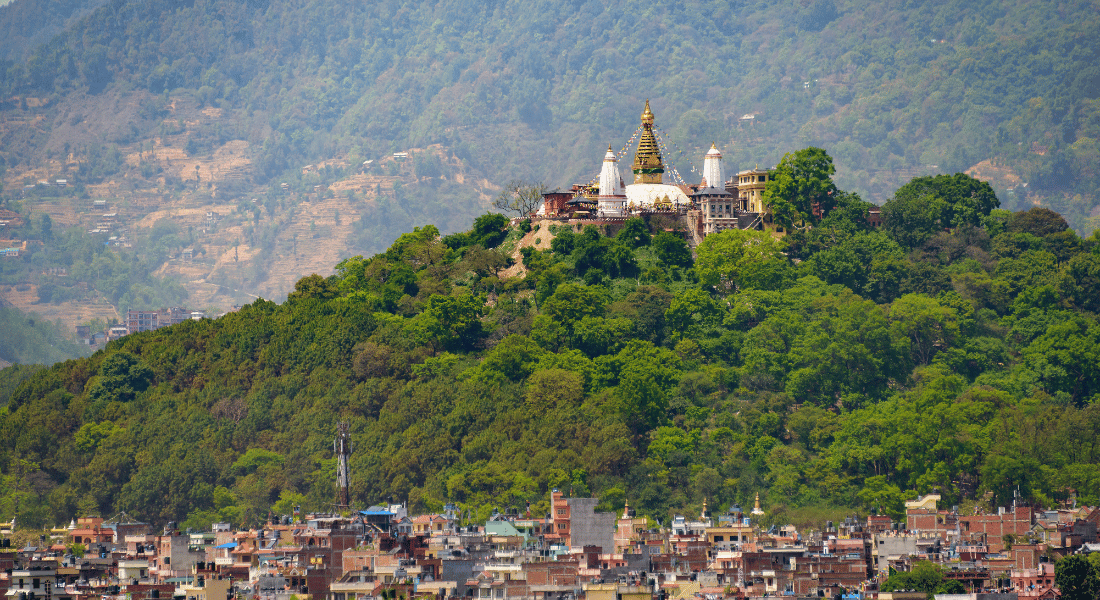If you're planning a trip to Nepal and seeking a detailed guide to its most remarkable destinations, you've come to the right place. Our blog, Top 10 Places to Visit in Nepal, offers an in-depth look at the top 10 places you absolutely must visit, showcasing the breathtaking landscapes, rich cultural heritage, and unforgettable experiences that make Nepal a unique travel destination. From the towering peaks of the Himalayas and the serenity of its ancient temples to the vibrant street life of Kathmandu and the tranquil beauty of its remote villages, our guide will help you uncover the best that Nepal has to offer. Whether you're an adventure seeker, a history enthusiast, or someone in search of natural beauty and tranquillity, this blog will provide you with all the insights you need to plan an unforgettable journey through this Himalayan paradise.
Nepal, a small yet incredibly diverse country nestled between India and China, is a treasure trove of natural beauty and cultural richness. The country's landscape ranges from the towering snow-capped peaks of the Himalayas in the north to the lush subtropical forests of the Terai plains in the south. Known as the land of the Himalayas, it is home to the world's highest peaks, including the iconic Mount Everest. But beyond its majestic mountains, Nepal boasts a vibrant tapestry of ancient temples, bustling markets, lush jungles, and serene lakes.
This guide will not only highlight the must-see sights but also provide tips and insights to make your trip seamless and memorable. From adrenaline-pumping treks to soul-stirring cultural encounters, get ready to participate in a journey that will leave you breathless and wanting more. Uncover the magic of Nepal with our top 10 picks, meticulously chosen to showcase the very best this captivating country has to offer.
What makes Nepal an attractive destination?
Nepal, a land of unparalleled beauty and profound spirituality, stands as a beacon for travellers seeking diverse experiences. Nestled in the heart of the Himalayas, this enchanting country offers a tapestry of cultural richness, breathtaking landscapes, and thrilling adventures. From the ancient temples and vibrant festivals that celebrate its storied heritage to the serene monasteries that provide a sanctuary for spiritual seekers, Nepal captivates the hearts of those who visit. No wonder it's more than just a destination to visit. Here are some reasons that make Nepal an attractive destination to travel:
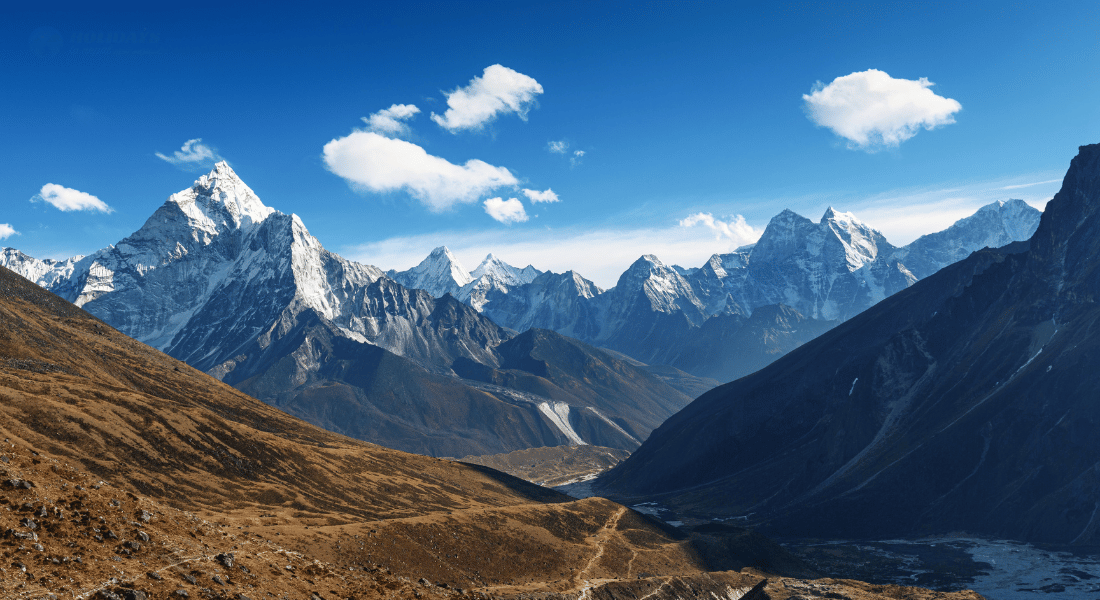
-
Cultural Significance: Nepal's diverse cultural heritage is woven from a combination of native customs, Buddhism, and Hinduism. Ancient temples, stupas, and monasteries dot the nation, reflecting its rich spiritual past. Events like Dashain, Tihar, and Buddha Jayanti are eagerly anticipated and provide tourists with an opportunity to see Nepal's dynamic cultural life. The country's cultural diversity is enhanced by the coexistence of numerous ethnic groups, each with its own distinct customs and traditions.
-
Natural Beauty: With scenes ranging from the majestic Himalayan peaks to lush lowlands and deep jungles, Nepal boasts unmatched natural beauty. Whether it's the placid Phewa Lake in Pokhara, the jaw-dropping canyons of the Kali Gandaki, or the verdant rhododendron forests of the Annapurna region, the country's varied geography offers breathtaking views at every turn. There are chances to get up close and personal with Nepal's wildlife and natural environments in national parks and conservation areas such as Sagarmatha and Chitwan.
-
Spiritual Significance: Nepal has long been a popular spiritual destination, drawing travellers and seekers from all over the world. One of the holiest places in Buddhism, Lumbini is the birthplace of Lord Buddha and attracts pilgrims looking for spiritual comfort. Meditation and prayer are conducted in the many temples and monasteries that are dispersed around the nation, including Boudhanath Stupa and Swayambhunath (Monkey Temple). Visitors can have a singular and enlightening experience at these locations because of their calm and spiritual atmosphere.
-
Adventure activities: With so many exciting things to choose from, Nepal is a haven for adventure seekers. Trekking in the Himalayas offers strenuous terrain and stunning vistas along routes like the Annapurna Circuit and Everest Base Camp. An exhilarating experience of white-water rafting in the rapids of the Trisuli and Bhote Koshi rivers is available. Extreme adventure seekers can experience life-changing thrills via mountain biking in difficult terrain, bungee jumping in Bhote Koshi, and paragliding in Pokhara.
Nepal as a travel destination is multifaceted, encompassing its rich cultural heritage, stunning natural landscapes, deep spiritual roots, and thrilling adventure opportunities. This unique combination makes Nepal an irresistible destination for travellers from all walks of life.
Why Nepal for Indian Tourists?
Nepal's appeal to Indian tourists is deeply rooted in shared cultural and religious ties. Both countries celebrate Hinduism and Buddhism, evident in the plethora of temples and sacred sites that dot the landscape. Places like Pashupatinath in Kathmandu and Janakpur, revered as the birthplace of Sita, hold profound spiritual significance for Indian visitors, offering a familiar yet enriching cultural experience in Nepal.

Moreover, travelling to Nepal from India is remarkably convenient, facilitated by multiple border crossings and direct flights linking major cities in both nations. The absence of a visa requirement for Indian tourists further simplifies the journey, promoting seamless travel experiences. This ease of access is complemented by linguistic similarities and cultural affinities, fostering a sense of belonging and warmth that enhances the overall travel experience.
Adding to its allure, Nepal presents exceptional value for Indian tourists. The favourable exchange rate between the Indian Rupee and the Nepalese Rupee makes Nepal an affordable destination where visitors can indulge in comfortable accommodations, savour local cuisine, and partake in various activities without exceeding their budget. This cost-effectiveness, combined with Nepal's diverse attractions and hospitable environment, ensures that Indian travellers can enjoy a fulfilling and memorable vacation experience in this enchanting Himalayan nation.
Useful Read: Travel Information For Indians Visiting Nepal
List of Top 10 Places to Visit in Nepal
Provided is the list of the top 10 places to visit in Nepal, with its major highlights:
|
Destination |
Major Highlights |
|
Kathmandu |
|
|
Pokhara |
|
|
Chitwan National Park |
|
|
Lower Mustang |
|
|
Bhaktapur |
|
|
Janakpur |
|
|
Nagarkot |
|
|
Lumbini |
|
|
Bandipur |
|
|
Annapurna Base Camp |
|
Kathmandu - The Capital City
Nepal’s capital, Kathmandu, is a thriving, bustling city that is the country’s cultural and historical centre. Kathmandu is a living museum of Newari architecture and Hindu and Buddhist traditions, with its rich tapestry of old temples, palaces, and courtyards. Not to be missed are the UNESCO World Heritage Sites in the Kathmandu city, which include the ancient Durbar Kathmandu Durbar Square, Swayambhunath (the Monkey Temple), Pashupatinath Temple, Boudhanath Stupa, Jal Narayan Temple, and so on. The city is charming and gives visitors a comprehensive understanding of Nepalese culture with its vibrant marketplaces, vibrant festivals, and varied cuisine.
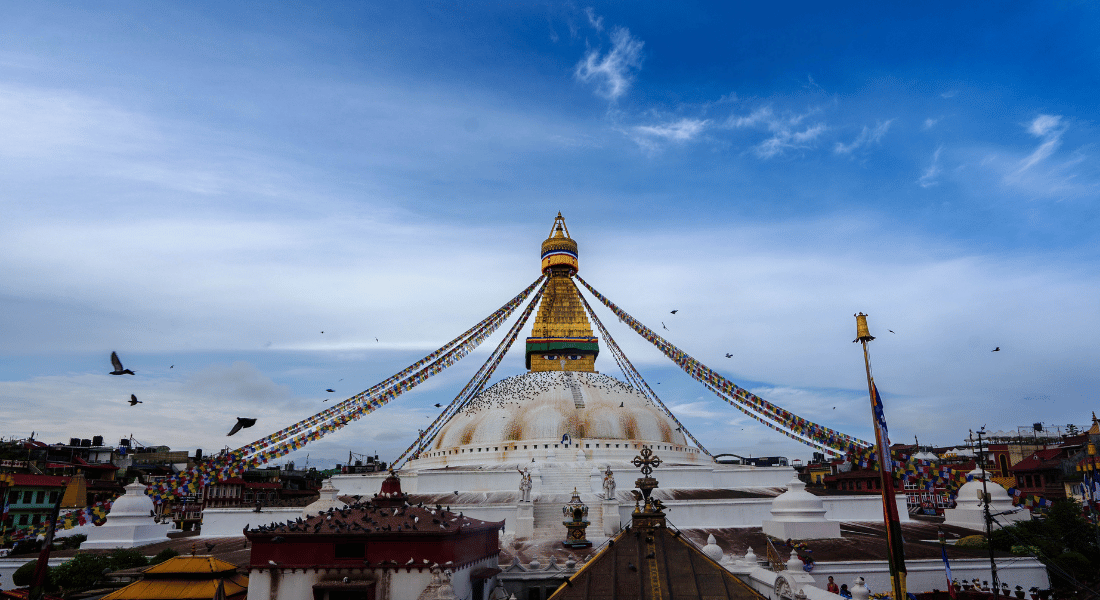
Here are some of the must visit places in Kathmandu:
-
Pashupatinath Temple: Pashupatinath Temple is one of the holiest Hindu temples dedicated to Lord Shiva. Located on the banks of the Bagmati River. It is a UNESCO World Heritage Site known for the main temple built in the Nepalese pagoda style, characterised by intricately carved wooden rafters (tundals) and a gilded spire. The two-story structure houses a four-faced lingam of Lord Shiva, which is unique and revered. It attracts thousands of devotees, especially during the festival of Maha Shivaratri and Teej.
-
Jal Narayan Temple: Also known as Budhanilkanthanath Temple, this ancient Hindu temple is dedicated to Lord Vishnu and is renowned for its remarkable stone sculpture of Vishnu reclining on the coils of the cosmic serpent, Shesha Naga. The deity, known as Budhanilkantha or Narayana, is depicted in a peaceful sleeping posture, floating on a sacred pond. The statue, carved from a single block of black basalt, lies in a pond, symbolising. Devotees offer prayers and perform rituals, especially on auspicious occasions and festivals dedicated to Lord Vishnu.
-
Swayambhunath Stupa: Commonly known as the Monkey Temple, Swayambhunath is an ancient religious complex atop a hill in the Kathmandu Valley. It is revered by both Buddhists and Hindus and presents an example of religious harmony. The main stupa has a golden spire with the eyes of Buddha looking out across the valley in all directions. Surrounding the main stupa are numerous shrines, statues, and Tibetan prayer flags, creating a vibrant and sacred atmosphere. Visitors ascend a steep staircase flanked by playful monkeys, adding to the temple's unique charm.
-
Boudhanath Stupa: Boudhanath Stupa is one of the largest spherical stupas in Nepal and a major pilgrimage site for Buddhists. Its massive mandala makes it one of the largest spherical stupas in the world. Surrounding Boudhanath Stupa is a vibrant Tibetan Buddhist community, bustling with monasteries, shops selling traditional handicrafts, and cosy cafes offering a tranquil view of the stupa. Boudhanath Stupa's cultural and spiritual significance, combined with its architectural grandeur and peaceful ambience, make it a must-visit destination for those exploring Nepal's rich religious heritage and seeking moments of tranquillity amidst bustling Kathmandu.
-
Kathmandu Durbar Square: Kathmandu Durbar Square is a historic square in front of the old royal palace of the former Kathmandu Kingdom. It is a UNESCO World Heritage Site known for its traditional architecture, courtyards, and temples. The square is a sprawling complex of palaces, temples, courtyards, and shrines dating back to the mediaeval period. The architectural styles span centuries, blending pagoda-style temples, intricately carved wooden structures, and stone sculptures that reflect Nepal's artistic and religious heritage. Highlights include the Hanuman Dhoka Palace, the Taleju Temple, Kumari Ghar (the residence of the Living Goddess Kumari), and the Kal Bhairav statue.
What to do in Kathmandu?
Kathmandu is a city that offers a rich tapestry of experiences, from exploring ancient temples and bustling markets to enjoying serene gardens and cultural performances. Whether you're a history buff, a spiritual seeker, or an adventure enthusiast, Kathmandu has something to offer everyone.
|
Activities |
|
Visit the historic Durbar Squares. |
|
Explore UNESCO listed World Heritage Sites. |
|
Savour local foods. |
|
Participate in the festivals. |
|
Experience Newari culture. |
|
Experience Kathmandu’s nightlife. |
Learn More: Kathmandu Sightseeing
Pokhara - The Adventure Capital
The charming city of Pokhara, also known as the "Gateway to the Himalayas," is tucked away next to Phewa Lake and encircled by towering mountain ranges. For those seeking relaxation and breathtaking natural beauty, Pokhara's tranquil lakeside location with the breathtaking Annapurna and Dhaulagiri peaks as a backdrop makes it the ideal getaway. Important attractions include taking a boat ride on Phewa Lake, going on an exploration of the mysterious Gupteshwor Cave, and taking in the expansive vistas from Sarangkot Hill. Travellers of all stripes will find the city to be an exciting destination because of its exciting nightlife and variety of adventure activities, which include zip-lining and paragliding.

Here are some of the must visit places in Pokhara:
-
Gupteshwor Mahadev Cave: It is a popular religious and tourist destination and is considered one of the major attractions of Pokhara. The cave is sacred to Hindus and is named after Lord Shiva. A natural limestone formation inside the cave resembles the holy Shiva Lingam, a symbol of Lord Shiva worshipped by Hindus. Devotees and tourists alike come here to offer prayers and seek blessings in the serene ambiance of the cave. Beyond its spiritual importance, Gupteshwor Mahadev Cave offers an adventurous experience with pathways leading to a hidden waterfall known as Devi's Fall or Davis Falls, where the roaring waters cascade through a narrow corner.
-
Davis Falls: Davis Falls, also known as Devi's Falls or Patale Chhango, plunges down a cliff and then disappears into a natural tunnel that is approximately 500 feet (150 metres) long and runs 100 feet (30 metres) below ground level. What makes Davis Falls particularly intriguing is its underground passage that continues into a cave-like formation, adding to its mystique and allure.
-
Bindhyabasini Temple: The Bindhyabasini Temple is a significant Hindu temple located on a hilltop overlooking Pokhara, Nepal. It's the oldest temple in the city and is dedicated to the fierce aspect of Goddess Durga, known as Bindhyabasini. The main white coloured shikhar style temple is dedicated to Bindhyabasini. There are also smaller shrines dedicated to other Hindu deities, including Saraswati, Shiva, Hanuman, and Ganesh.
-
Taal Barahi Temple: Situated on a small island in the middle of Phewa Lake, Pokhara's most prominent lake, the Taal Barahi Temple is dedicated to Goddess Barahi, an incarnation of Durga, the fierce protector and warrior goddess. It represents the manifestation of Ajima, symbolising the feminine force, which is a pilgrimage site for both Hindus and Buddhists, reflecting the religious harmony in Nepal. The only way to reach the temple is by taking a short and scenic boat ride across the lake.
-
Sarangkot: This hilltop village near Pokhara is a popular spot for paragliding and offers stunning sunrise and sunset views of the Annapurna mountain range. The main attraction of Sarangkot is undoubtedly the unparalleled view of the Himalayas. Witnessing the majestic peaks bathed in the golden light of sunrise is a truly unforgettable experience. Besides the spectacular view, Sarangkot is considered one of the best paragliding destinations in the world.
What to do in Pokhara?
Pokhara, a haven for nature lovers and adventure seekers, offers a variety of activities. Witness stunning Himalayan views from viewpoints like Sarangkot or explore Phewa Lake by boat, visiting the Tal Barahi Temple. Adrenaline junkies can paraglide, bungee jump, ultralight flight, go white-water rafting, or zipline. Explore caves, visit the International Mountain Museum, immerse yourself in Nepalese culture at temples, or simply enjoy the nightlife of Pokhara.
|
Activities |
|
Boating on Phewa Lake. |
|
Enjoy the Sarangkot sunrise. |
|
Relax at Lakeside. |
|
Participate in adventure activities. |
|
Sightseeing around the city. |
|
Experience Nightlife. |
Learn More: Adventure Activities in Pokhara
Chitwan National Park
Chitwan, located in the subtropical lowlands of Nepal, is renowned for its rich biodiversity and the famous Chitwan National Park, a UNESCO World Heritage Site. Lush jungles, grasslands, and riverine forests support a wide diversity of wildlife, including the critically endangered one-horned rhinoceros, Bengal tigers, elephants, and several bird species. Intriguing forest excursions, Rapti River kayaking, bird watching, and cultural interactions with the local Tharu people are among the activities that await visitors to Chitwan. For those who enjoy the outdoors and animals, Chitwan is a must-visit location because of its unique combination of adventure and biological diversity.

Here are some of the most visit places in Chitwan National Park:
-
Tharu villages: The Tharu people are the indigenous inhabitants of the Chitwan region. Visiting a Tharu village is a great way to learn about their unique culture and way of life. You can see their traditional houses, watch cultural performances, and even sample their delicious food.
-
Elephant Breeding Centre: Learn about the efforts to conserve Asian elephants at the Elephant Breeding Centre. You can see baby elephants playing in the mud and learn about the important role elephants play in the Chitwan ecosystem.
-
Crocodile Breeding Centre: The Crocodile Breeding Centre in Chitwan National Park, Nepal, is an important conservation initiative focused on the protection and propagation of crocodiles, particularly the critically endangered Gharial. Established in 1978, the centre aims to address the declining population of these reptiles due to habitat loss, poaching, and other anthropogenic pressures. Visitors to the breeding centre can learn about the life cycle of crocodiles and the conservation efforts being undertaken.
What to do in Chitwan National Park?
The park is home to various species, including the Bengal tiger, one-horned rhinoceros, and several species of deer, birds, and reptiles. It is a haven for wildlife enthusiasts and researchers. Visitors can engage in various jungle activities such as elephant safaris, jeep safaris, bird watching, canoe rides, and guided nature walks. These activities provide an opportunity to experience the park's rich biodiversity up close.
|
Activities |
|
Jungle Walk. |
|
Elephant Safari/Jeep Safari. |
|
Canoe Ride. |
|
Bird watching. |
|
Visit Tharu Village. |
Learn More: Chitwan National Park
Lower Mustang
Mustang is a remote and culturally rich region known for its stark landscapes and ancient monasteries. The area's rugged terrain and mountain scenery make it a unique destination for trekkers and adventurers. The region's topography is shaped by the Kali Gandaki River George, one of the deepest gorges in the world, which carves its way through the area. The contrast between the river's lush banks and the surrounding barren hills creates a unique and breathtaking panorama. Moreover, the region is home to several ancient monasteries that play a vital role in preserving Tibetan Buddhist practices. These monasteries often feature intricate murals, statues, and artefacts.
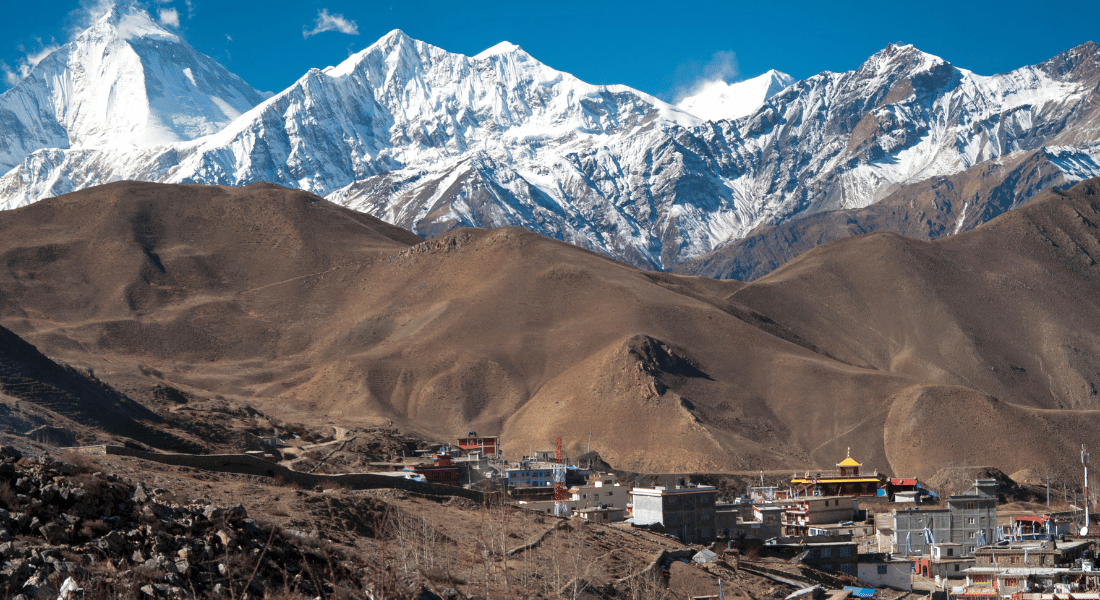
Here are some of the most visit places in Lower Mustang:
-
Muktinath Temple: Muktinath Temple is a sacred site for both Hindus and Buddhists, located in the Mustang district of Nepal at an altitude of approximately 3,710 metres (12,172 feet) in the Himalayas. It is one of the world's highest temples and holds great religious significance. For Hindus, Muktinath is known as Mukti Kshetra, which means "place of liberation, or moksha.” Similarly, for Buddhists, Muktinath is known as Chuming Gyatsa, which means "Hundred Waters" in Tibetan.
-
Marpha Village: Marpha Village is a jewel nestled in the Mustang region of Nepal. The village is a photographer's delight, with traditional stone houses boasting whitewashed walls, flat roofs, and intricate wood carvings. Narrow, flagstone streets lined with vibrantly painted Buddhist monasteries add to the village's unique character. It is also popular for its abundance of apple orchards. The unique combination of dry climate and fertile soil, thanks to the rain shadow effect of the Himalayas, creates perfect conditions for growing high-quality apples.
What to do in Lower Mustang?
Mustang provides a perfect blend of adventure, culture, and natural beauty, making it a captivating destination for travellers looking to explore off-the-beaten-path Nepal. Whether you're trekking through rugged terrain, soaking in natural hot springs, or immersing yourself in local traditions, Mustang promises a memorable and enriching experience.
|
Activities |
|
Take a scenic jeep ride. |
|
Trekking. |
|
Experience Tibetan culture. |
|
Visit Monasteries. |
|
Explore the villages. |
Related Article: Muktinath Temple Photos
Bhaktapur - The Living Museum
One of the three historic cities in the Kathmandu Valley, Bhaktapur, has a wealth of well-preserved examples of mediaeval architecture and art. Bhaktapur, sometimes called a "living museum," is a lively bazaar with centuries-old temples, finely carved wooden buildings, and tight alleyways. The Bhaktapur Durbar Square, a UNESCO World Heritage Site, is home to the magnificent 55-Window Palace, the Vatsala Temple, and Nepal's highest pagoda, the Nyatapola Temple. It is a masterwork of Newari architecture. In addition, Bhaktapur is well-known for its ceramics, age-old crafts, and mouthwatering regional specialities like royal curd, or Juju Dhau. The city's enduring atmosphere and abundance of cultural offerings offer a comprehensive exploration of Nepal's artistic and historical legacy.
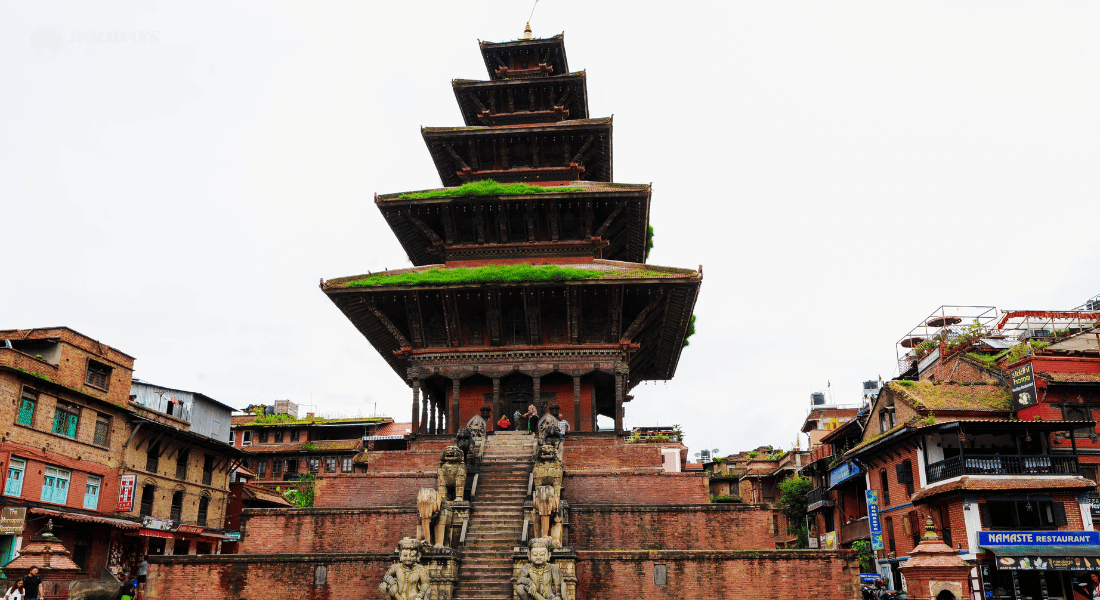
Here are some of the most visit places in Bhaktapur:
-
Bhaktapur Durbar Square: This historic square is a UNESCO World Heritage Site, featuring palaces, courtyards, and temples. Notable structures in Bhaktapur Durbar Square include the 55-Window Palace, Vatsala Temple, and Nyatapola Temple, the tallest pagoda-style temple in Nepal. This square is a cultural hub where traditional festivals, rituals, and cultural activities are celebrated throughout the year. It offers insights into Newari culture, art, and craftsmanship, with artisans still practising traditional techniques within the vicinity.
-
Doleshwor Mahadev Temple: Doleshwor Mahadev Temple is believed to be the head of the Kedarnath Temple in India. It is a revered site for Hindu pilgrims, situated in Bhaktapur. A unique shaped Shiva lingam can be found in the main temple, representing the head of Lord Shiva.
-
Kailashnath Mahadev Statue: The statue is a representation of Lord Shiva, a major deity in Hinduism known as the destroyer of evil and the transformer. It stands in the small village of Sanga, located about 20 km east of Kathmandu, Nepal's capital. This is the world's tallest Shiva statue, standing 143 feet tall. The Kailashnath Mahadev Statue has become a popular tourist attraction in Nepal. Visitors can admire the statue's grandeur, serene surroundings, and panoramic views.
-
Changunarayan Temple: Changunarayan Temple, located near Bhaktapur in Nepal, is an ancient Hindu temple dedicated to Lord Vishnu. It is considered one of the oldest Hindu temples in the Kathmandu Valley and holds great historical and architectural significance. The temple is renowned for its exquisite architecture, characterised by intricate wood, stone carvings, and artistic craftsmanship typical of Nepalese pagoda-style temples. Moreover, it was recognised as a UNESCO World Heritage Site in 1979 for its outstanding universal value in terms of culture and history.
What to do in Bhaktapur?
Bhaktapur is a treasure trove of historical landmarks, artistic traditions, and culinary delights, offering a memorable and immersive experience for visitors seeking to explore Nepal's cultural heritage.
|
Activities |
|
Explore the heritage sites. |
|
Travel through the historical alleys. |
|
Attend festivals; Bisket Jatra. |
|
Participate in Pottery. |
|
Enjoy the local specialities; Newari cuisine, Juju Dhau (yoghurt). |
Janakpur - Ancient Mithila Kingdom
Janakpur, often referred to as the City of Ponds and Temples, is a focal point of the Mithila culture, known for its traditional art, literature, and festivals. The city's religious landmarks attract pilgrims from across Nepal and India, making it a vibrant centre for spiritual and cultural tourism. The festivals celebrated here, especially Vivah Panchami and Ram Navami, are marked by elaborate processions, devotional songs, and dramatic reenactments of episodes from the Ramayana.
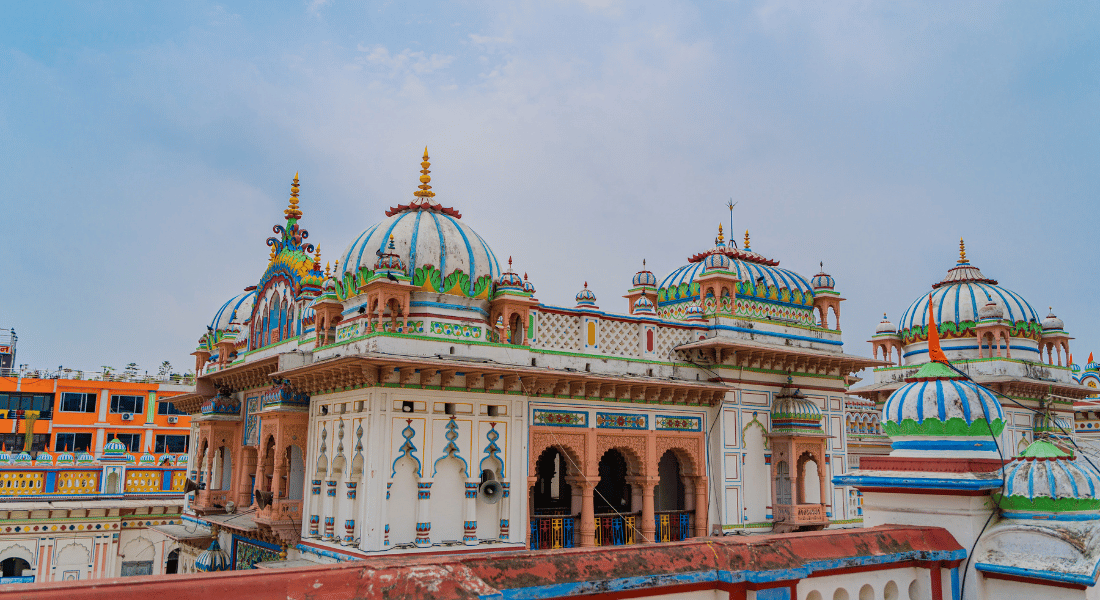
Here are some of the most visit places in Janakpur:
-
Janaki Temple: Janaki Temple, also known as the Janaki Mandir, is a grand temple dedicated to Goddess Sita (also known as Janaki), the consort of Lord Rama. The temple is a prime example of Mughal and Koiri architecture, built in an opulent marble structure with intricate designs. The temple attracts thousands of Hindu pilgrims, especially during the festival of Vivah Panchami, which celebrates the wedding of Sita and Rama.
-
The Vivah Mandap: The Vivah Mandap, or marriage pavilion, is located near the Janaki Temple and holds immense religious significance. It is believed to be the exact spot where the divine marriage of Lord Rama and Goddess Sita took place. The mandap is a beautifully decorated structure that mirrors the architectural style of the Janaki Temple.
-
Ram Mandir: The Ram Mandir, located in Janakpur, is dedicated to Lord Rama. This temple is an important place of worship for devotees and is known for its serene atmosphere and spiritual significance. The architecture of the Ram Mandir is relatively simpler compared to the Janaki Temple, but it holds a central place in the religious activities of the area.
-
Dhanush Sagar: Dhanush Sagar is a sacred pond situated near the Janaki Temple. It is one of the four significant ponds in Janakpur, the others being Ganga Sagar, Ratan Sagar, and Parna Kunda. The pond holds great mythological importance, as it is believed to be associated with the Dhanush (bow) of Lord Shiva, which was broken by Lord Rama during the swayamvara (marriage ceremony) of Sita.
What to do in Janakpur?
Janakpur is a city deeply rooted in Hindu mythology and offers a blend of spiritual experiences, cultural richness, and traditional charm, making it a captivating destination for travellers interested in exploring Nepal's cultural heritage.
|
Activities |
|
Explore religious sites. |
|
Visit local temples and shrines. |
|
Experience the vibrant culture. |
|
Explore local bazaars. |
|
Stroll around the sacred ponds. |
Learn More: Janakpur Nepal
Nagarkot - Paradise of Bhaktapur
Nagarkot, a serene hill station located in the Bhaktapur District of Nepal, is renowned for its breathtaking natural beauty. Nestled at an altitude of approximately 2,175 metres, it offers unparalleled views of the Himalayas, making it a popular destination for both tourists and locals. Among its many attractions, the sunrise and sunset views, along with the panoramic mountain vistas, stand out as truly exceptional experiences.
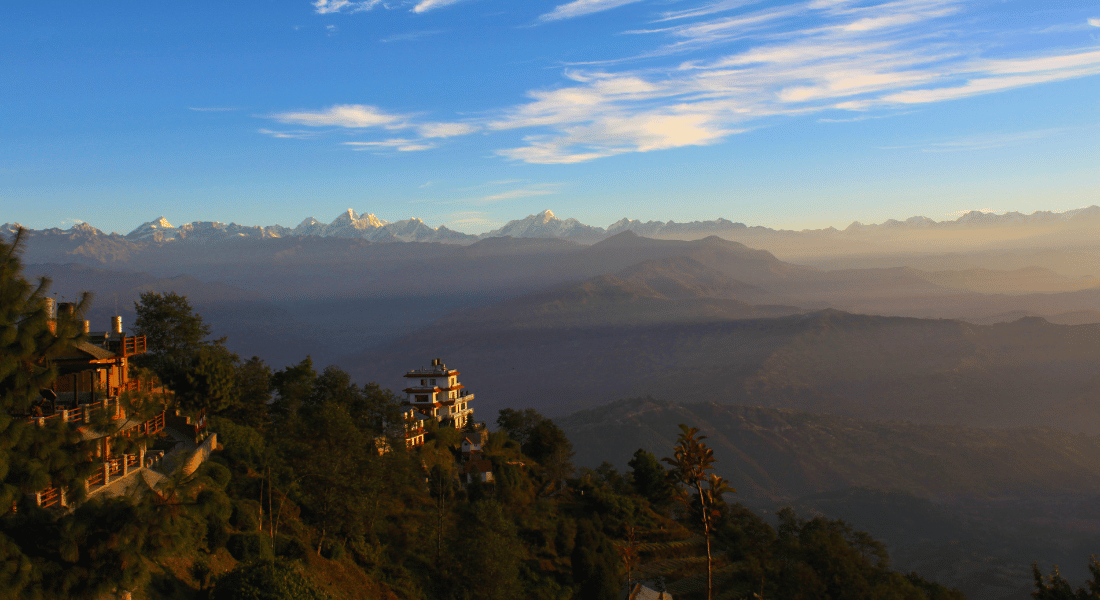
Here are some of the most visit places in Nagarkot:
-
Nagarkot View Tower: Offering breath-taking panoramic views of the Himalayas, the Nagarkot View Tower is a well-known attraction in Nagarkot, Nepal. Perched at an approximate elevation of 2,195 metres (7,201 feet), this tower offers an unrivalled vantage position for taking in some of the highest peaks on Earth, such as Mount Everest, Annapurna, Manaslu, Ganesh Himal, and Langtang. The mountains are drenched in golden hues at sunrise and dusk, which draws a large number of visitors to the Nagarkot View Tower for a breathtaking display.
What to do in Nagarkot?
Nagarkot offers a peaceful retreat amidst natural beauty and stunning mountain views, making it an ideal destination for nature lovers, photographers, and those seeking relaxation away from the bustling city life.
|
Activities |
|
Observing Sunrise and Sunset views. |
|
Visit Nagarkot view tower. |
|
Relaxation and wellness. |
|
Hiking. |
|
Enjoy panoramic Mountain views. |
Related Read: Hill stations in Nepal
Lumbini - Birthplace of Gautam Buddha
The birthplace of Siddhartha Gautama, often known as Gautam Buddha, is Lumbini, which is located in southern Nepal. This UNESCO World Heritage Site includes the Maya Devi Temple, which marks the site of the actual birth, the historic Ashoka Pillar, which dates back to the third century BCE, and a tranquil Sacred Garden that is home to monks representing different Buddhist traditions from all over the world. In this hallowed pilgrimage site, visitors meditate amid the spiritual and historical richness, immerse themselves in the tranquil atmosphere, and explore cultural museums with objects from the life of Buddha.
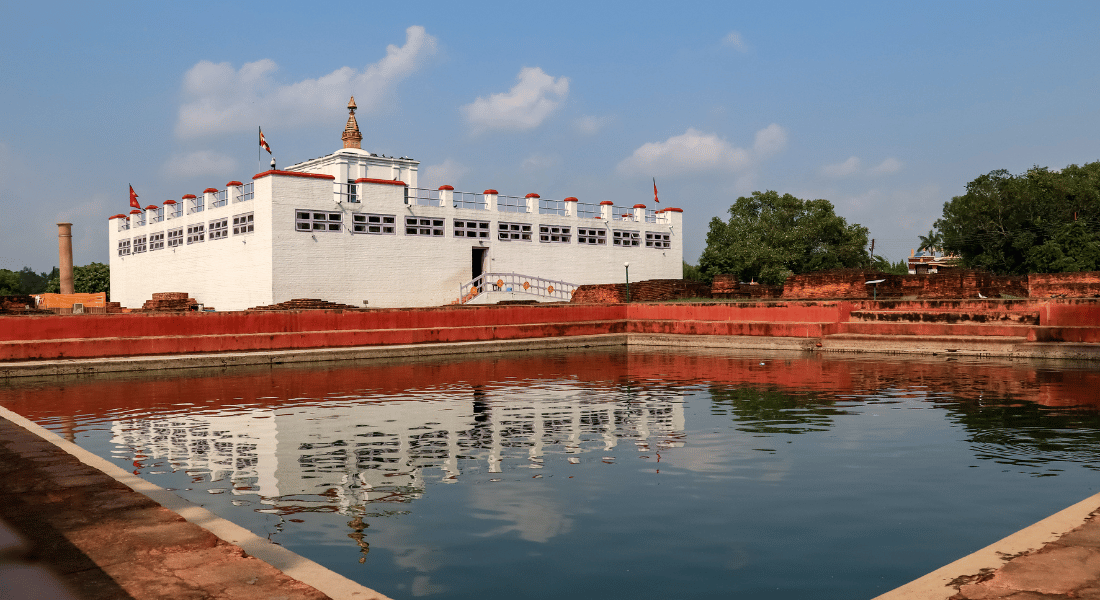
Here are some of the most visit places in Lumbini:
-
Monastic Zone: The Lumbini Monastic Zone is a serene and spiritually significant area dedicated to housing various international monasteries and meditation centres. It is divided into East and West Monastic Zones, each featuring monasteries built by different countries, showcasing diverse architectural styles and Buddhist traditions from around the world. This area fosters a tranquil environment for meditation, reflection, and cultural exchange, highlighting the global nature of Buddhism.
-
Maya Devi Temple: The Maya Devi Temple is the most sacred site in Lumbini. It is believed to mark the exact spot where Queen Maya Devi gave birth to Siddhartha Gautama. The temple complex includes a sacred pool where Maya Devi is said to have bathed before giving birth, as well as the remains of earlier temples built on the site. The current temple structure is a recently built brick building.
-
Ashoka Pillar: The Ashoka Pillar is a stone pillar erected by Mauryan Emperor Ashoka the Great in 249 BCE. The pillar is inscribed with Brahmi script, which mentions Lumbini as the birthplace of the Buddha. The Ashoka Pillar is an important piece of evidence that helped to confirm the location of Lumbini.
What to do in Lumbini?
Lumbini offers a serene and spiritual experience, allowing visitors to connect with the roots of Buddhism and explore its profound cultural and historical heritage.
|
Activities |
|
Take a tour to the monasteries. |
|
Meditation. |
|
Attend prayer ceremonies. |
|
Visit the sacred garden. |
|
Marvel at the historical monuments. |
Learn More: Lumbini Nepal | Buddhist Pilgrimage Sites in Nepal
Bandipur - Newari Heritage Town
Bandipur is a hidden gem that beautifully combines the rich heritage of Newari architecture, breathtaking mountain views, and an unparalleled tranquil environment. This idyllic hilltop town, perched at an altitude of 1,030 metres, offers a unique blend of cultural richness and natural splendour, making it a must-visit destination for travellers seeking both peace and a glimpse into Nepal's architectural legacy. It is a living museum of Newari architecture, which reflects the artistic and cultural richness of the Newar people. The town's well-preserved buildings, intricately carved wooden windows, and ornate doorways are a testament to the craftsmanship that flourished during the mediaeval period.
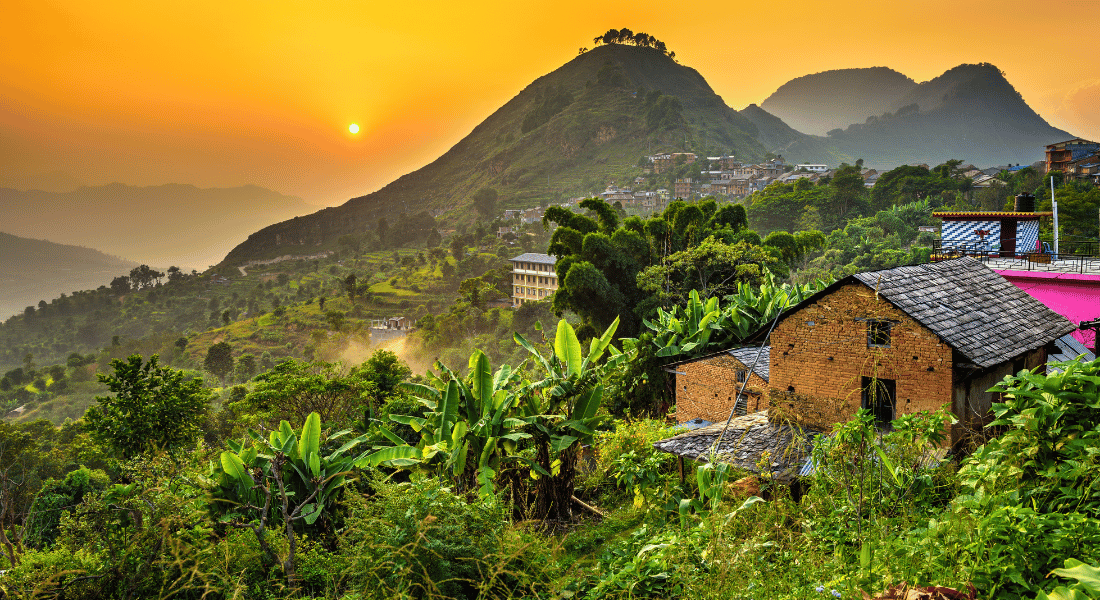
Here are some of the most visit places in Bandipur:
-
Siddha Gufa: Siddha Cave, also known as Siddha Gufa, is the second largest caves in Nepal and a marvel of natural architecture. Located in the village of Bimal Nagar, near Bandipur, it is approximately 430 metres deep and 50 metres high, making it a fascinating destination for adventurers and nature enthusiasts alike. Inside, visitors are greeted by impressive stalactites and stalagmites that have formed over thousands of years, creating a mystical and otherworldly atmosphere. The cave boasts vast chambers and narrow passages, adding to the sense of adventure and discovery.
-
Thani Mai Temple: Perched atop a hill in Bandipur, Thani Mai Temple is a revered religious site dedicated to the local deity, Thani Mai. Known for its spiritual significance and breathtaking views, the temple offers visitors a serene and tranquil environment. The hilltop location provides stunning panoramic views of the surrounding valleys, mountains, and the village of Bandipur, with particularly spectacular sunrise and sunset vistas. The temple’s peaceful ambiance makes it an ideal spot for meditation, prayer, and quiet contemplation.
What to do in Bandipur?
Bandipur's tranquil atmosphere, stunning views, and cultural richness make it a hidden gem for travellers seeking an authentic Nepali experience amidst natural beauty and rural charm.
|
Activities |
|
Explore Bandipur bazaar. |
|
Experience local culture. |
|
Sunset view from viewpoint. |
|
Taste authentic newari cuisine. |
|
Visit Siddha Gufa. |
Annapurna Base Camp
Annapurna Base Camp, located at an altitude of 4,130 metres, is a coveted destination for trekkers from around the globe. The trek typically begins in the town of Pokhara, taking adventurers through lush forests, terraced fields, and traditional Gurung villages. The trek to Annapurna Base Camp (ABC) is a journey that epitomises the allure of Nepal's Himalayan landscape, combining challenging yet beautiful hiking trails with some of the most scenic mountain views in the world.
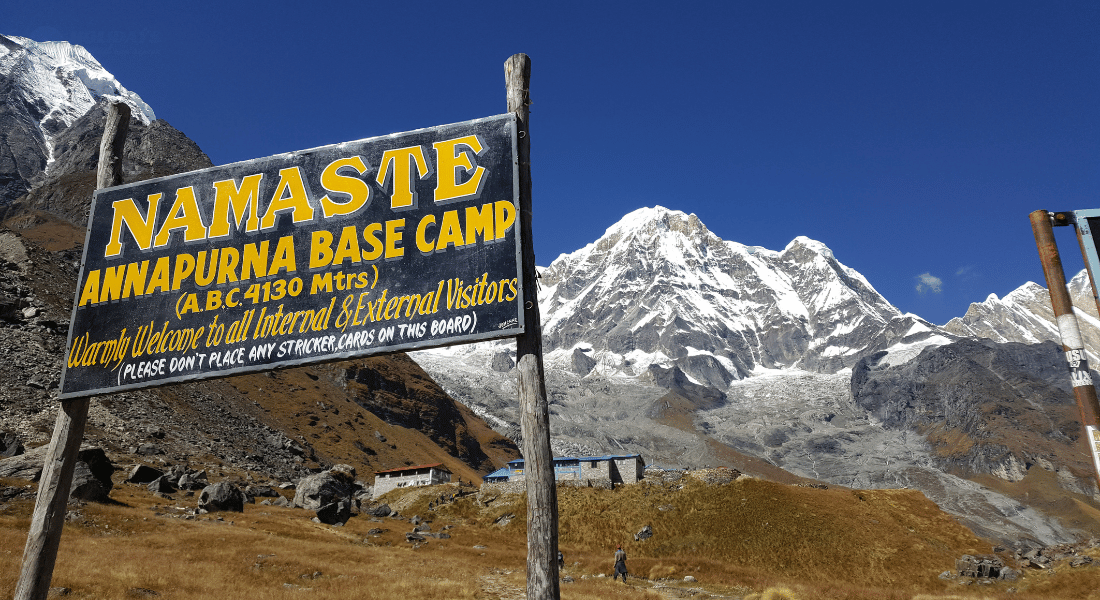
Here are some of the most visit places during Annapurna Base Camp Trek:
-
Ghandruk: Ghandruk is a picturesque village nestled in the Annapurna region of Nepal, known for its traditional charm and stunning natural beauty. As one of the largest Gurung settlements, Ghandruk offers visitors a unique cultural experience with its traditional stone houses, narrow alleys, and vibrant community life. The village itself is a living museum of Gurung culture, with a local museum that showcases traditional artefacts, clothing, and tools, providing insight into the daily lives of the Gurung people. Visitors can also enjoy traditional dances and local cuisine, making Ghandruk a cultural highlight on the Annapurna Base Camp trek.
-
Jhinu Danda: Jhinu Danda, often referred to simply as Jhinu, is a charming village known for its relaxing hot springs and scenic beauty. Situated along the trekking route to Annapurna Base Camp, Jhinu Danda provides a welcome retreat for weary trekkers. The highlight of Jhinu Danda is its natural hot springs, located a short walk down from the village by the banks of the Modi Khola river. Soaking in these warm, therapeutic waters while surrounded by lush greenery and the soothing sounds of the river is a rejuvenating experience that many trekkers look forward to
What to do in Annapurna Base Camp?
Trekking to Annapurna Base Camp is an unforgettable adventure that combines physical challenge with awe-inspiring natural beauty and cultural experiences. Whether you're an avid trekker, nature lover, or adventure seeker, ABC promises a journey of a lifetime in the heart of the Himalayas.
|
Activities |
|
Trekking. |
|
Marvel at the stunning mountain views. |
|
Experience the himalayan culture. |
|
Explore Annapurna Sanctuary. |
|
Relax in the hot springs. |
Related Package: Annapurna Base Camp Trek
Best time to visit to Nepal
Nepal experiences four different seasons; Spring, Monsoon, Autumn and Winter. Despite autumn and spring being the best seasons to visit Nepal, the best season to visit Nepal largely depends on your interests and planned activities. Here’s a detailed breakdown of the different seasons of Nepal:
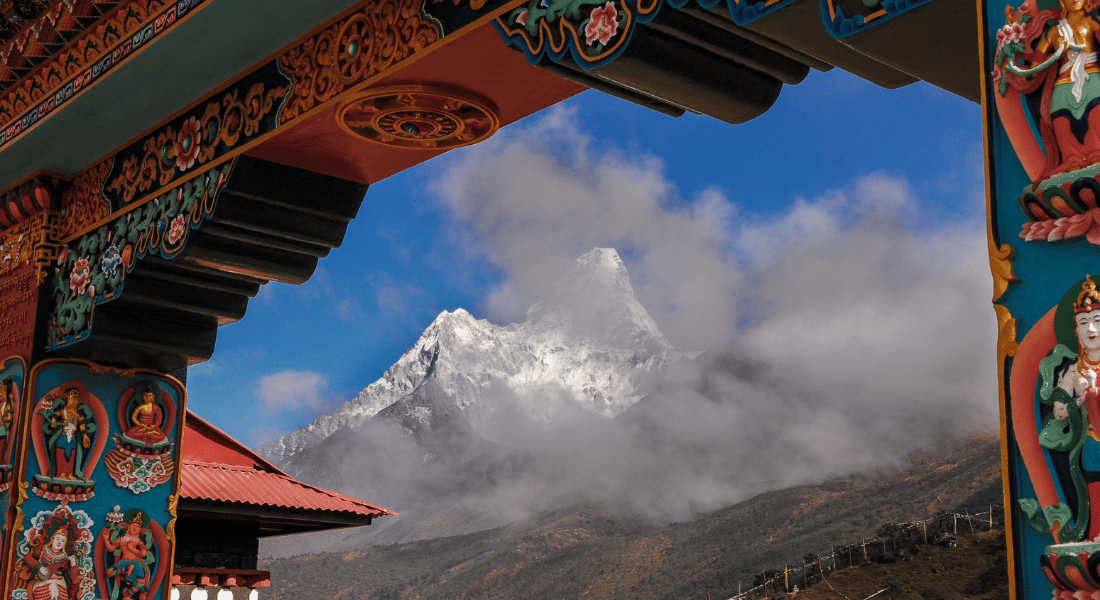
-
Spring (March-May): Spring in Nepal, from March to May, is an ideal season for visiting due to its mild and pleasant weather. The temperatures are moderate, making it perfect for trekking and outdoor activities. The clear skies provide stunning views of the Himalayan peaks, enhancing the overall experience. Additionally, this season sees various cultural festivities, offering travellers a chance to immerse themselves in Nepalese traditions and celebrations.
-
Monsoon (June-August): The monsoon in Nepal is considered the summer season. During this period, the country experiences heavy rainfall, especially in the central and eastern regions. While the rain can lead to lush, green landscapes and fewer crowds, it also brings challenges such as slippery trekking paths and rural areas with potential landslides.
-
Autumn (September-November): Autumn, spanning from September to November, is considered the best time to visit Nepal. The weather during this season is characterised by clear skies, moderate temperatures, and fresh, clean air after the monsoon rains. Autumn also coincides with major festivals like Dashain and Tihar, allowing visitors to experience Nepal's rich cultural heritage. The combination of favourable weather and vibrant cultural events makes autumn an ideal time to explore Nepal.
-
Winter (December-February): Winter in Nepal, from December to February, brings cooler temperatures and clear skies. While the lower elevations remain relatively mild, higher elevations, particularly in the Himalayas, can be extremely cold with heavy snowfall. This season is suitable for lower-altitude treks and exploring cultural sites in Kathmandu, Pokhara, and other cities. Winter also offers a quieter, less crowded experience compared to the peak tourist seasons.
For the best overall experience, visit Nepal in spring (March-May) for clear skies and cultural festivals, or in autumn (September-November) for pleasant weather, city exploration, wildlife safaris, and cultural celebrations like Dashain and Tihar.
Related Read: Best time to visit Nepal from India
Hidden Gems of Nepal
Nepal, renowned for its towering peaks and vibrant culture, holds within its borders a collection of hidden gems that offer unique glimpses into the country's rich history and traditions. Among these lesser-known treasures are Kirtipur, Panauti, Gorkha, and Tansen—towns that, while not as famous as Kathmandu or Pokhara, provide equally compelling experiences for the discerning traveller.
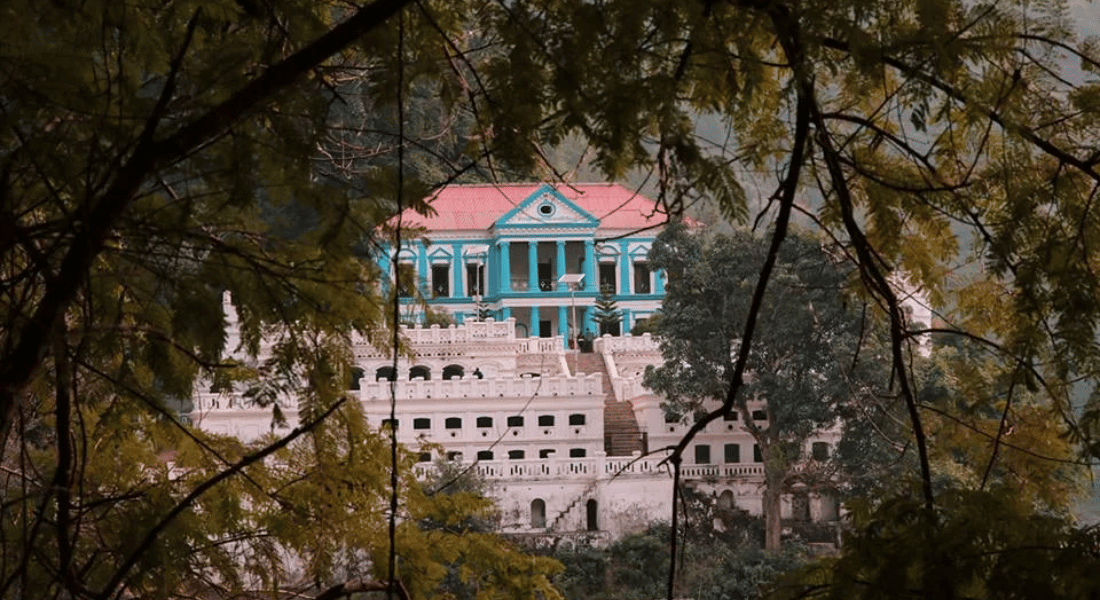
-
Kirtipur: Kirtipur, a historic town a short distance southwest of Kathmandu, provides a tranquil diversion from the bustle of the metropolis. This mediaeval city is renowned for its cobblestone streets, noteworthy historical sites, and beautifully preserved Newari architecture. The Uma Maheshwar Temple, Bagh Bhairab Temple, and Chilanchu Vihara are just a few of the noteworthy locations that showcase Kirtipur's rich cultural legacy. Wandering around the town's winding lanes, visitors may take in the breathtaking views of the Kathmandu Valley and the mediaeval atmosphere.
-
Panauti: Panauti is a town rich in folklore and history, located roughly 33 kilometres southeast of Kathmandu. With origins dating back to the thirteenth century, it is thought to be among the oldest towns in Nepal. In particular, Panauti is well known for its historic temples and conventional Newari architecture. One of the oldest pagoda-style temples still standing in Nepal is the Indreshwar Mahadev Temple, which is a must-see. Panauti is a great place for anyone looking for serenity and a rich historical background because of its tranquillity and sense of travelling back in time.
-
Gorkha: Many people believe that Gorkha, a town with a rich historical legacy, is where modern Nepal originated. From this place, in the eighteenth century, King Prithvi Narayan Shah launched his mission to unite Nepal. Views of the surrounding valleys and the far-off Himalayas are breathtaking from the high Gorkha Durbar (palace). The ancient palace complex, which houses the Kalika and Gorakhnath temples, is open for exploration by guests. Both history buffs and those who enjoy the outdoors will find the town intriguing to visit due to its picturesque beauty and rich history.
-
Tansen: Tansen, a quaint village in western Nepal perched atop Shreenagar Hill, is a cultural intersection point connecting the highlands and Terai plains. Tansen offers a distinctive fusion of cultures and histories and is well-known for its traditional Newari dwellings, winding lanes, and colourful bazaars. Situated on the banks of the Kali Gandaki River, the Rani Mahal, commonly referred to as the Taj Mahal of Nepal, is a stunning palace that bears witness to the town's royal past. Tansen's allure is enhanced by its chilly climate and breathtaking views of the Himalayas, which include Dhaulagiri and Annapurna.
Important Tips
When planning your trip to Nepal, a land of stunning landscapes and rich cultural heritage, it's essential to prepare adequately to make the most of your experience. Consider the additional travel tips provided below to ensure a smooth and enjoyable journey:
-
Travel Itineraries: Creating a well-planned itinerary can help you make the most of your trip to Nepal. Here are some recommended tours you can consider for your trip to Nepal:
|
Recommended Tour Itineraries |
-
Weather considerations: Nepal experiences diverse climates depending on the region and season. Pack accordingly, especially if visiting mountainous regions where temperatures can vary significantly between day and night.
-
Festivals: Nepal has a vibrant festival calendar. Plan your trip around major festivals like Dashain and Tihar to experience the cultural richness firsthand. However, it is the peak season for domestic tourism, so booking your tour beforehand will be a safe choice.
-
Health and Safety Tips: Be prepared for high altitudes if you're trekking. Pack appropriate clothing and footwear, and be aware of altitude sickness symptoms. Moreover, keep your belongings secure, especially in crowded areas. Follow local advice and guidelines, especially when trekking or visiting wildlife areas.
-
Responsible Tourism: Respect local customs and traditions. Choose eco-friendly accommodations and support local businesses.
By following these tips, you can ensure a safe, enjoyable, and responsible trip to Nepal, making the most of the country's natural beauty and rich cultural heritage.
Conclusion
Exploring the Top 10 places to visit in Nepal through this blog offered a comprehensive guide to the must-see destinations in this captivating country. Each location highlighted provides unique insights into the rich tapestry of Nepal’s cultural, natural, and spiritual landscape. This blog is an invaluable resource for anyone planning a trip to Nepal, regardless of their expertise level. Provided information on the main sights, historical significance, and distinctive experiences that each location has to offer.
From the bustling streets of Kathmandu Valley with its UNESCO World Heritage Sites to the serene beauty of Pokhara, renowned for its lakes and mountain views, the blog uncovered the diverse offerings of Nepal. The lesser-known yet equally fascinating places like the ancient city of Bhaktapur, the wildlife-rich Chitwan National Park, and the sacred birthplace of Lord Buddha in Lumbini are also covered. Adventure enthusiasts will find detailed information on trekking routes in the Annapurna region, while those seeking tranquillity can learn about the meditative environments of monasteries and stupas scattered across the country.
By encapsulating the essence of these top 10 destinations, this blog not only helps in planning an itinerary but also inspires a deeper appreciation for Nepal’s multifaceted charm. Through vivid descriptions and practical insights aimed at the blog, we hope every traveller can make the most of their journey to this Himalayan paradise. Nepal isn't just about Everest; discover the hidden gems and top 10 must-see destinations in this captivating country.

